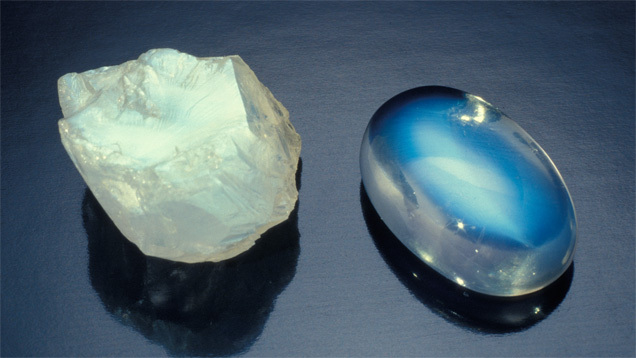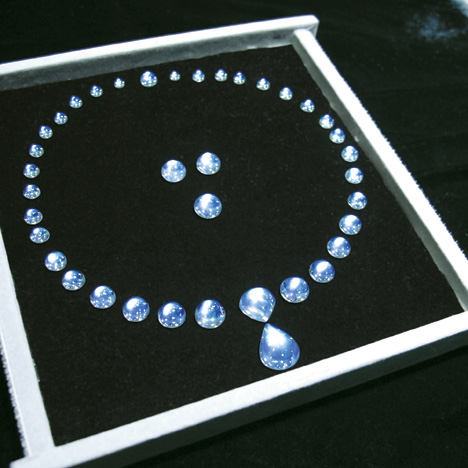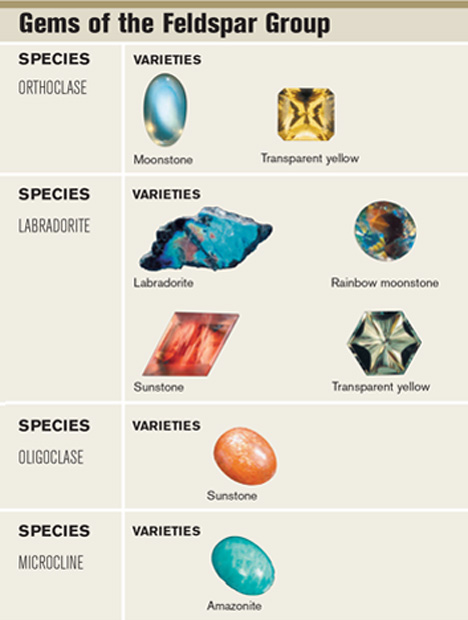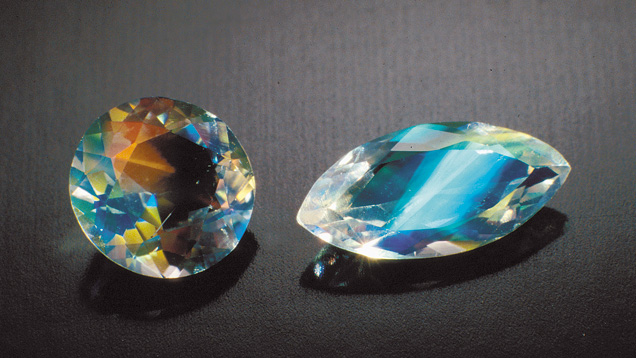
 Janet Deleuse Moonstone & Diamond Ring
Janet Deleuse Moonstone & Diamond RingFeldspars are the most widespread minerals in the earth’s crust, as well as some of the most diverse. You can pick up a rock anywhere in the world, and you’ll probably find that it contains a mineral or two from the feldspar group.

Blue sheen against a colorless background is a prized moonstones combination. This
suite of finely crafted moonstones is arranged for a designer ensemble.
- Courtesy Temple Trading Company
Moonstone is a variety of the feldspar-group mineral orthoclase. It’s composed of two feldspar minerals, orthoclase and albite. At first, the two minerals are intermingled. Then, as the newly formed mineral cools, the intergrown orthoclase and albite separate into stacked, alternating layers.suite of finely crafted moonstones is arranged for a designer ensemble.
- Courtesy Temple Trading Company

When light falls between these thin, flat layers, it scatters in many directions, producing the phenomenon called adularescence. Adularescence is the light that appears to billow across a gemstone, giving its surface a glowing appearance.
Perhaps the most captivating aspect of adularescence is its appearance of motion. The misty light seems to roll across the gem’s surface as you change the viewing angle.
Other feldspar minerals can also show adularescence. One is a labradorite feldspar found mainly in Labrador, Canada. Another labradorite—found in Madagascar—has a multicolored adularescence over a light bodycolor. It’s known in the trade as rainbow moonstone, despite the fact that it’s actually a variety of labradorite rather than orthoclase.

A variety of labradorite is sometimes called rainbow moonstone.
Sanidine is another feldspar mineral that can include adularescent gems called moonstones. To be called moonstone, a mineral’s actual identity is not as important as the beauty of its adularescence.
